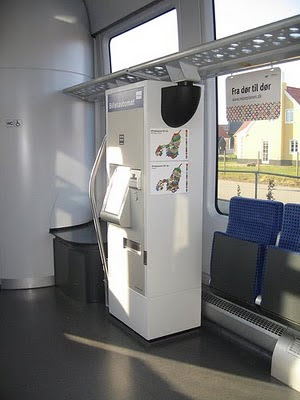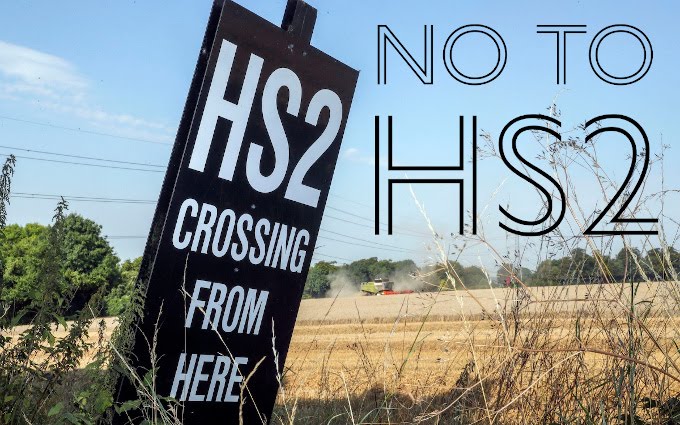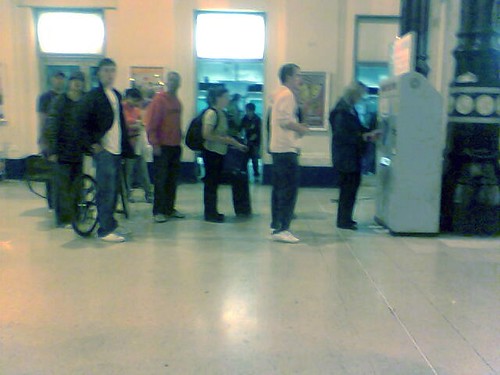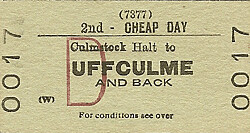28 Feb 2011
It's about capacity
"It's about capacity", advocates of HS2 keep saying. If that is the main reason, surely the solution is to build a new conventional-speed railway on roughly the proposed alignment? This would in practice amount to the reinstatement of the Great Central line, preceded by the upgrading and electrification of the Chiltern route.
Ticket troubles - 2
Buying a train ticket can be a trouble. You can get them on the internet, and some train operators have excellent web sites. An example is sj.se, which lets you print out your ticket and reserve a seat, showing a plan of the train so that you can pick a genuine window seat if you want.

In some places, including parts of Denmark, the ticket machines are on the trains, which is the best place of all.
In the 1980s British Rail introduced a simple ticket machine called the Quickfare. These sold, for cash, a limited range of tickets with a couple of button presses, the whole operation taking about 15 seconds. But they were replace about five years ago by the machines in the top picture, which To buy a ticket with the new machines takes a dozen or more button presses and about two minutes for the transaction.
It is obvious that people have trouble with them. You can see them with puzzled looks on their faces, with their fingers hovering over the screen wondering which button to press. Many people are scared to use the machines and go to the ticket office instead, which they would not have done with the old machines. The result is long queues both at the ticket machines and in the ticket office. I have often missed trains even though I allowed 20 minutes to buy a ticket.
I have complained endlessly about the machines but this being Britain, complaining is useless. But it shows that there are easier ways to cut journey times than by spending billions on new railways.
Ticket troubles - 1
For the best part of 150 years, train tickets all over the world looked like this. Known as Edmondson card tickets, all the information was clear, and passengers and staff could take it in at a glance.
In Britain, these were superseded by the present credit-card style of ticket about thirty years ago, when new computerised ticket-issuing machines were introduced.
At first, they were printed with dot-matrix printers which were blurred and indistinct, and this often led to disputes as passengers ended up with the wrong tickets. Nowadays, the printing on the tickets is better but the information is still not presented in a user-friendly way. This makes unnecessary difficulties for both passengers and staff. There is no excuse because there is plenty of room on the tickets to put on the information in a way that makes it possible to take in at a glance.
13 Feb 2011
Beijing reviews high-speed rail plans
China’s Ministry of Railways is conducting a review of the country’s ambitious high-speed rail proposals after an influential state-backed think-tank raised questions about the affordability and practicality of the planned network.
In a report submitted by the China Academy of Science to the State Council, experts urged a rethink of the emphasis on massive infrastructure investment, particularly the bullet train expansion programme.
One of the concerns expressed in the report is the unsustainable level of debt that has propelled rail building projects across the country, particularly since the government launched its stimulus package in late 2008 to combat the effects of the global economic crisis.
The report found that the acceleration of infrastructure investment triggered by the stimulus package had caused a lack of integration between transport services across the country, leaving highways, subways, train stations and airports not properly connected.
Article in FT here
In a report submitted by the China Academy of Science to the State Council, experts urged a rethink of the emphasis on massive infrastructure investment, particularly the bullet train expansion programme.
One of the concerns expressed in the report is the unsustainable level of debt that has propelled rail building projects across the country, particularly since the government launched its stimulus package in late 2008 to combat the effects of the global economic crisis.
The report found that the acceleration of infrastructure investment triggered by the stimulus package had caused a lack of integration between transport services across the country, leaving highways, subways, train stations and airports not properly connected.
Article in FT here
1 Feb 2011
Wrexham and Shropshire closes
The Wrexham and Shropshire service closed last week, despite having the highest satisfaction rating (99%) of all train operating companies.
The service had been operated with push-pull mark 3 coaches powered by class 67 diesel locomotives. The reasons for the failure of this venture will no doubt be argued over but the main factor seems to be that the alternative routes were quicker and there was little scope for competition. The territory on the Welsh borders north of Wolverhampton is thinly populated and was never going to generate much traffic.
I would not be surprised to see the stock redeployed very soon on a service between London and Birmingham. There are substantial towns along this route, including High Wycombe, Banbury and Leamington Spa. The prospects for business are altogether better. Moor Street station has recently been refurbished and well located so long as one does not want to change trains to travel on from New Street.
The service had been operated with push-pull mark 3 coaches powered by class 67 diesel locomotives. The reasons for the failure of this venture will no doubt be argued over but the main factor seems to be that the alternative routes were quicker and there was little scope for competition. The territory on the Welsh borders north of Wolverhampton is thinly populated and was never going to generate much traffic.
I would not be surprised to see the stock redeployed very soon on a service between London and Birmingham. There are substantial towns along this route, including High Wycombe, Banbury and Leamington Spa. The prospects for business are altogether better. Moor Street station has recently been refurbished and well located so long as one does not want to change trains to travel on from New Street.
Subscribe to:
Posts (Atom)


